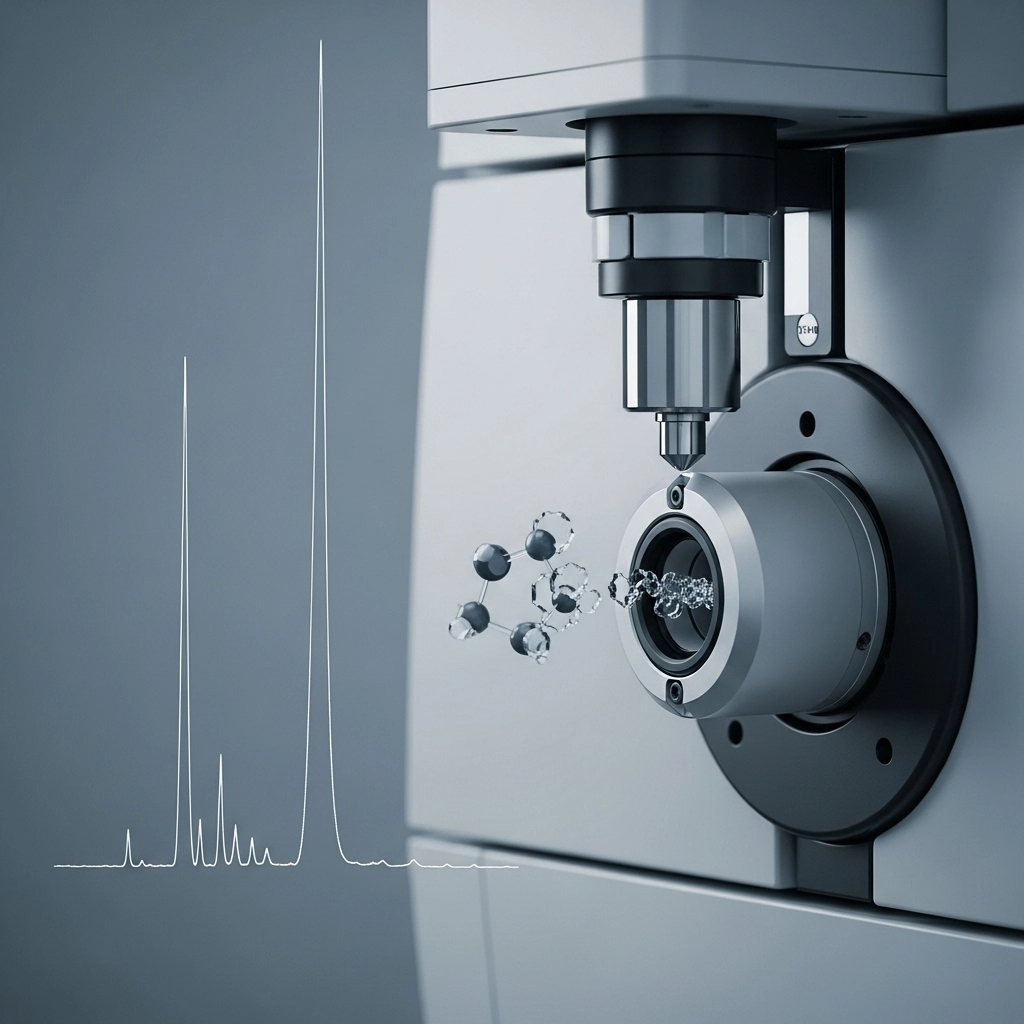MS-based Approaches for Ubiquitin Characterization

ImageFX (2025)
Ubiquitin is an essential player in a range of significant cellular processes. Protein degradation, protein transport, and protein modification are all targeted functions of ubiquitin and the process of ubiquitination. Despite the “ubiquitous” nature of the protein and its cellular significance, proteomic approaches towards process characterization have proven difficult. Modern techniques aim to provide enhanced insights into the quantitative and qualitative features of ubiquitin and its multiple substrate pathways. Here we highlight traditional challenges and new MS technologies and equipment associated with ubiquitin analysis.
Understanding the Ubiquitination Process
Proteins targeted for ubiquitination are modified through three main steps, activation, conjugation, and ligation performed by ubiquitin-activating enzymes (E1s), ubiquitin-conjugating enzymes (E2s), and ubiquitin ligases (E3s) respectively. The result is the attachment of ubiquitin to lysine residues on the protein substrates via an isopeptide bond, cysteines residues via a thioester bond, serine and threonine through an ester bond, or the protein’s amino terminal group via a peptide bond.
Modification can result in a single ubiquitin protein or a chain of ubiquitin moieties known as polyubiquitination. The processes involved in polyubiquitination are somewhat complex, however, it is the final arrangement which dictates function. For instance, polyubiquitination on defined lysines of the ubiquitin protein, namely K48 and K29, is associated with proteasome-mediated protein degradation. Other modifications, both mono and poly, are specific to processes such as endocytic trafficking, inflammation, protein translation, and DNA repair.
Mass Spectrometry in Ubiquitin Remnant Profiling
Advancements in high-resolution mass spectrometers and peptide enrichment methodologies have led to the emergence of ubiquitin remnant peptide profiling among other approaches. This bottom up technique has permitted investigations into changes in protein ubiquitination and the underlying cellular processes affected, as well as further characterization of ubiquitin protein substrates.
Overcoming Challenges in Ubiquitin MS Analysis
A common hurdle in mass spec based ubiquitin analyses has been the absence of specific enrichment methods for ubiquitinylated peptides. Past approaches have included poly-His tagged ubiquitin biosynthesis coupled with nickel-NTA ubiquitin-substrate purification, as well as the use of ubiquitin-binding domains for enrichment. Although these have worked on a small-scale level, success has not generally translated to cellular proteome-wide identification and quantitation of ubiquitination sites.
One class of modern techniques has taken advantage of distinct peptide signatures arising through ubiquitin target protein digestion. An example includes the detection of di-glycine moieties from the C-terminal digestion of ubiquitin using antibody specific to this signature. The enriched remnant peptide can easily be detected on a high-resolution MS instrument by the resulting 114 Da mass shift of the di-glycine. Pre- and post-enrichment fractionation can cut down on sample complexity and help in data stratification.
Exploring Ubiquitin Chain Topologies with MS
Ubiquitin chain arrangements or topologies can be explored by subsequent enrichment with ubiquitin-specific antibodies or other binding molecules, and can be digested in gel for analysis by LC-MS. There are a host of additional techniques for enrichment as well, including those for middle-and top-down analysis, each based on and suited for the application of interest.
An example of quantitative ubiquination analysis involves remnant peptide profiling combined with metabolic labeling (SILAC) or chemical labeling (isobaric tags). The combination of techniques has proven successful in a number of applications, ranging from cell cycle and DNA repair effects to histone and proteasome modifications. These types of investigations, and many others, will continue to benefit from advancements in high-resolution MS instrumentation to detect low abundance targets and to confer increased precision to multiplexed experiments.
Advanced MS Platforms for Ubiquitination Studies
QTOF and LTQ Orbitrap LC-MS/MS approaches using low-energy CID and low-energy linear ion trap CID have been successful in the analysis of peptides generated from simple digestions of medium complexity systems. Used in concert with unbiased database searching, these approaches have yielded significant details into ubiquitination (and sumoylation) and the protein trafficking or degradation pathways they impact.
ETD-based LC-MS/MS and MALDI-TOF/TOF tandem MS using high energy CID have been useful as well, particularly in distinguishing isopeptide identities from dual digestion experiments, such as those employing both trypsin and microwave-assisted chemical digestion. The advantages of ETD include the comprehensive peptide fragment profile that is generated, thereby facilitating the tedious processes of peptide mapping and characterization.
The caparison of high and low energy fragmentation, coupled with the use of high-resolution MS instrumentation, has and will continue to provide insight into the targets and the topology of ubiquitination and other post-translational modifications. These techniques and instruments have shed significant light on the proteomic pathways and biological processes impacted. However, there is room for advancement, particularly for biologically complex or multiplexed experiments involving multiple cell types, sample numbers, and protein dynamic ranges.
Frequently Asked Questions (FAQs)
What is the primary role of ubiquitin in cells? Ubiquitin is crucial for various cellular processes, including protein degradation, protein transport, and other protein modifications, acting as a signal that targets proteins for specific functions or fates.
How are proteins modified by ubiquitination? Proteins are modified through a three-step enzymatic cascade involving E1 (activating), E2 (conjugating), and E3 (ligase) enzymes, which attach ubiquitin to target proteins, typically on lysine residues.
What challenges does MS-based ubiquitin analysis address? Mass spectrometry helps overcome difficulties in characterizing ubiquitin's proteomic processes by providing enhanced insights into the quantitative and qualitative features of ubiquitination and its substrate pathways, especially in identifying modified sites.
How do modern MS techniques identify ubiquitination sites? Modern techniques often leverage the detection of di-glycine moieties, a distinct peptide signature resulting from the C-terminal digestion of ubiquitin, which can be identified by a characteristic 114 Da mass shift on high-resolution MS instruments.










